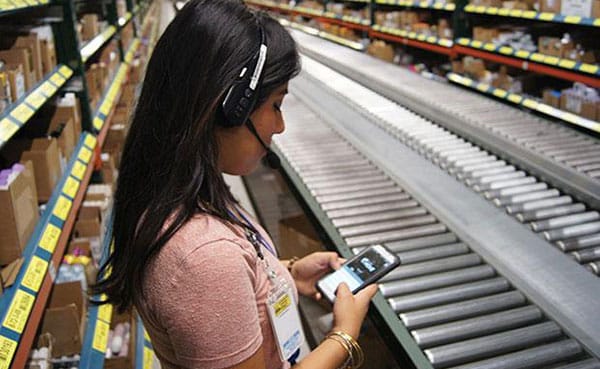The number of warehouse voice solutions has multiplied over the past 3-5 years, as described in our earlier blog post depicting the Voice Picking technology market. With all these new voice products, distribution and IT executives have to weigh many options when considering voice. Here are three things to look for when considering a voice system for your warehouse:
1. If users shout, swear and repeat themselves when using the software, there’s a problem.
- With proven voice solutions, mis-recognition of what a user says is rare, even in the noisy warehouse. With sub-standard recognition, you may force your users to repeat themselves.
- Besides reducing productivity, poor recognition will frustrate users and lead to low user acceptance. You’ve probably experienced this frustration with a bank or insurance company’s voice-directed call center.
- There are lots of good, robust speech recognition engines on the market, but it takes unique expertise to ensure flawless recognition across users, accents, mobile terminals, and noisy warehouse environments. (For some background and history on speech recognition, read this Wikipedia entry on speech recognition.)
- To avoid problems, any vendor you consider should have multiple voice systems in production running on different hardware platforms in a variety of warehouse settings. And don’t assume what works in a conference room demo will work on your warehouse floor.
2. Quick-and-dirty voice-enablement probably won’t give you the big improvements you want from voice.
- In recent years, a new category of voice-enablement tool kits have been introduced that promise to rapidly voice-enable an existing RF-based workflow.
- The advantage of a so-called voice-scraping approach (using a tool to screen scrape and voice-enable an existing RF workflow) is that it is quick and cheap.
- Many DCs that compare voice-scraping applications to RF-based processes typically see little improvement in user productivity and accuracy.
- The limitation of voice-scraping is that it creates a voice system with a workflow that was designed for RF, rather than a voice optimized process.
3. Voice is not just a substitute for RF or lights.
- The shortcomings of voice-scraping tools apply to voice applications that are voice-enabled versions of existing RF or pick-to-light systems – including some WMS voice add-ons.
- Voice-enabled applications may provide some performance gains compared to paper-based processes, but they typically don’t generate the really dramatic gains possible with voice.
- A true voice-centric application should provide a tailored workflow that is optimized for voice. Think of this as voice-empowerment rather than voice-enablement.
- Finally, today’s most advanced voice systems can combine voice, scanning and other technologies in a seamless voice-directed workflow. These multi-modal or voice-plus systems generate efficiency gains beyond what you could achieve with a first-generation voice-only system. Lucas is the pioneer of voice-plus applications and RSR Group is one example of a company that is using scanning and voice in a single application – check out this voice-plus video to learn more about RSR’s integrated technology choices.





